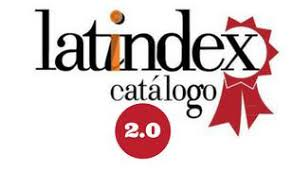Air quality study in open-pit quarries in general Roca, argentina
Keywords:
Open-pit mining, AERMOD, Air quality, particulate matterAbstract
This research have the objetive propose a study methodology to evaluate air
quality in a mining activity based on the confiability and analysis of meteorological,
topographic and emission data, which are entered into the dispersion model. The
methodology was applied to the emissions the particulate material with a size
smaller than 10 μm (PM10) generated from the operation of open pit quarries, near
General Roca town (Argentina); and then evaluates their dispersion and possible
impact on human health and / or the environment. The seasonal variations of the
dispersion were analyzed and the Gaussian dispersion model used is AERMOD. The
results showed that PM10 dispersion in different atmospheric conditions and
emissions in 2010, don ́t influence urban areas near quarries and don ́t that exceed
the legal limit. From the analysis of the seasonal variations of the dispersion changes
were observed in the extension of the plume and in the maximum hourly
concentration, especially in the autumn and winter seasons. The results of the
modeling (maximum hourly concentration values) were compared with aerosol
concentration data, obtained by remote sensors; Resulting in a determination
coefficient (R2 ~ 0.7). The proposed work methodology can be incorporated as a
control tool in government agencies for the evaluation and management of air
quality so as to prevent unsatisfactory scenarios.
Downloads
References
Abril G., Diez S. (2012). Modelado de la dispersión de material particulado PM 10 mediante la estimación de las tasas de emisión considerando la influencia de la meteorología local. Memorias, XI Congreso Argentino de Meteorología. Mendoza http://www.congremet.prmarg.org/upload/abril-gabriela.pdf
Australian Govemment (2011).. Emission Estimation Technique Manual for Mining. Department of Sustainability, Environment, Water, Population and Communities.
National Pollutant Inventory Australian Government. Manual, Canberra, Australia, Ahmad S.P., Torres O., Bhartia P.K., Leptoukh G., Kempler S.J. (2006). Aerosol index from TOMS and OMI measurements. Proceedings of the 86th AMS Annual Meeting,Greenbelt. https://ams.confex.com/ams/pdfpapers/104496.pdf
Allende D.G., Puliafito E. (2009). Comparación de modelos de dispersión en el modelado de emisiones gaseosas industriales del gran Mendoza. Contaminación atmosférica en Argentina: contribuciones de la II Reunión Anual PROIMCA 103 -113. UTN., Mendoza, Argentina, Beychok, M. (1979). Fundamentals of stack gas dispersion. Irvine, CA.
Briggs, G. (1993). Plume Dispersion in the Convective Boundary Layer. Part II: Analyses of CONDORS Field Experiment Data. Journal Of Applied Meteorology, 32(8), 1388-1425. http://dx.doi.org/10.1175/1520 0450(1993)032<1388:pditcb>2.0.co;2
Caputo, M., Giménez, M., & Schlamp, M. (2003). Intercomparison of atmospheric dispersion models. Atmospheric Environment, 37(18), 2435-2449. http://dx.doi.org/10.1016/s1352-2310(03)00201-2
Chu, D.A., Kaufman, Y.J., Ichoku, C., Remer, L.A., Tanré, D. and Holben, B.N. (2002). Validation of MODIS aerosol optical depth retrieval over land. Geophysical. Research Letters. 29 (12), 1 - 4.
Cimorelli, A., Perry, S., Venkatram, A., Weil, J., Paine, R., & Wilson, R. et al. (2005). AERMOD: A Dispersion Model for Industrial Source Applications. Part I: General Model Formulation and Boundary Layer Characterization. Journal Of Applied Meteorology, 44(5), 682-693. http://dx.doi.org/10.1175/jam2227.1
Dobbins R.A. (1979). Atmospheric Motion and Air Pollution. New York: John Wiley & Sons.
Gassman M. y Mazzeo N. (2000). Air Pollution Potential: Regional Study in Argentina. Environmental Management. 25 (4), 375–382.
González D.E y Coglaiti M.G. (2016). Study of vehicle between Neuquén and Centenario, Argentina. Atmósfera 29 (3): 267 – 277.
Herrero J.C. (2007). Calidad del Aire Ambiental. Proyecto geoambiental del complejo volcánico Farallón Negro. Convenio SEGEMAR (EMPREMIN) – YMAD. Catamarca – Argentina. Proyecto. Argentina, 384 pp.
Huertas, J., Camacho, D., & Huertas, M. (2012). Standardized emissions inventory methodology for open-pit mining areas. Environmental Science And Pollution Research, 19(7), 2784-2794. http://dx.doi.org/10.1007/s11356-012-0778-3
Koelemeijer, R., Homan, C., & Matthijsen, J. (2006). Comparison of spatial and temporal variations of aerosol optical thickness and particulate matter over Europe. Atmospheric Environment, 40(27), 5304-5315. http://dx.doi.org/10.1016/j.atmosenv.2006.04.044
Neshuku M. N. (2012). Comparación de la actuación de dos modelos de dispersión atmosférica (AERMOD y ADMS) para fuentes de minería a cielo abierto de la contaminación del aire. Tesis. Universidad de Pretoria. Pretoria, Sudáfrica.
Palese C., Gardio l J.M., Lassig J.L. (2009). Mapas de velocidad media del viento en el centro–este de Neuquén. Meteorológica. 34 (1), 17 – 27.
Puliafito E., Rey Saravia F., Pereyra M., Pagani M. (2009). Calidad del aire en el Polo Petroquímico de Bahía Blanca. Contaminación atmosférica en Argentina: II
Reunión Anual PROIMCA. Universidad Tecnológica Nacional. Mendoza, Argentina, 114 – 122.
Prohaska F.J. (1976). The climate of Argentina, Paraguay and Uruguay. World Survey of Climatology. (W. Schwerdtfeger, Ed.). Elsevier. 12, 57-69.
Reed W.R. (2005). IC/9478. Significant Dust Dispersion Models for Mining Operations. Department of Health and Human Services (DHHS),. Informe. Pittsburgh, EUA,.
Silvester S.A., Lowdnes I.S., Hargreaves D.M. (2009). A computational study of particulate emissions from an open pit quarry under neutral atmospheric conditions. Atmosferic. Environment. 43 (40), 6415 – 6424.
Torres O., Bhartia P.K., Herman J.R., Sinyuk A., Gimoux P., Holben B. (2002). A long-term record of aerosol optical depth from TOMS Observations and Comparison to AERONET Measurements. Journal of the Atmosphere Sciences. 59, 398 – 413.
Turner D.B. (1970). Workbook of Atmospheric Dispersion Estimates. Environmental Protection Agency. EUA.
USEPA (1995). 450-AP42-5ED.Compilation of Air Pollutant Emission Factors, Volume I: Stationary Point and Area Sources. Environmental Protection Agency. https://www3.epa.gov/ttn/chief/ap42/ch11/index.html Recuperado Noviembre 2015.
Venegas L.E., Mazzeo N.A. (1999). Atmospheric stagnation, recirculation and ventilation potential of several sites in Argentina. Atmospheric Research. 52, 43–57.
Vidot, J., Santer, R., & Ramon, D. (2007). Atmospheric particulate matter (PM) estimation from SeaWiFS imagery. Remote Sensing Of Environment, 111(1), 1-10. http://dx.doi.org/10.1016/j.rse.2007.03.009
Wang, J. and Christopher, S.A. (2003). Intercomparison between satellite-derived aerosol optical thickness and PM2.5 mass: Implications for air quality studies. Geophysical Research Letters. 30 (21), 2095 - 2099.
Weil J.C. (1988b). Plume rise. Lectures in Air Pollution Modeling. (A. Venkatram and J.C. Wyngaard, Ed). American Meteorological Society. 119 –162 pp.
Weil, J., Corio, L., & Brower, R. (1997). A PDF Dispersion Model for Buoyant Plumes in the Convective Boundary Layer. Journal Of Applied Meteorology, 36(8), 982-1003. http://dx.doi.org/10.1175/1520-0450(1997)036<0982:apdmfb>2.0.co;2
Willis, G., & Deardorff, J. (1981). A laboratory study of dispersion from a source in the middle of the convectively mixed layer. Atmospheric Environment (1967), 15(2),
Published
How to Cite
Issue
Section
License
Copyright (c) 2017 Boletin GeográficoTransfer of rights and data processing
The acceptance of an article for publication in the Journal Geographic Bulletin implies the cession of the rights of printing and reproduction, by any means and means, of the author in favor of the Department of Geography of the National University of Comahue, which will not reject any request reasonable for the authors to obtain permission to reproduce their contributions. The total or partial reproduction of the works published in the Geographic Bulletin must be done citing the origin, otherwise, the copyright is violated.
Likewise, it is understood that the concepts and opinions expressed in each work are the sole responsibility of the author, without being responsible or in solidarity, necessarily, neither the editorial staff nor the editorial staff.
It is the responsibility of the authors to be able to provide interested readers with copies of the raw data, procedure manuals, scores and, in general, relevant experimental material.
Likewise, the Management of the journal guarantees the appropriate treatment of personal data
COPYRIGHT TRANSFER FORM

















 Journal of the
Journal of the 